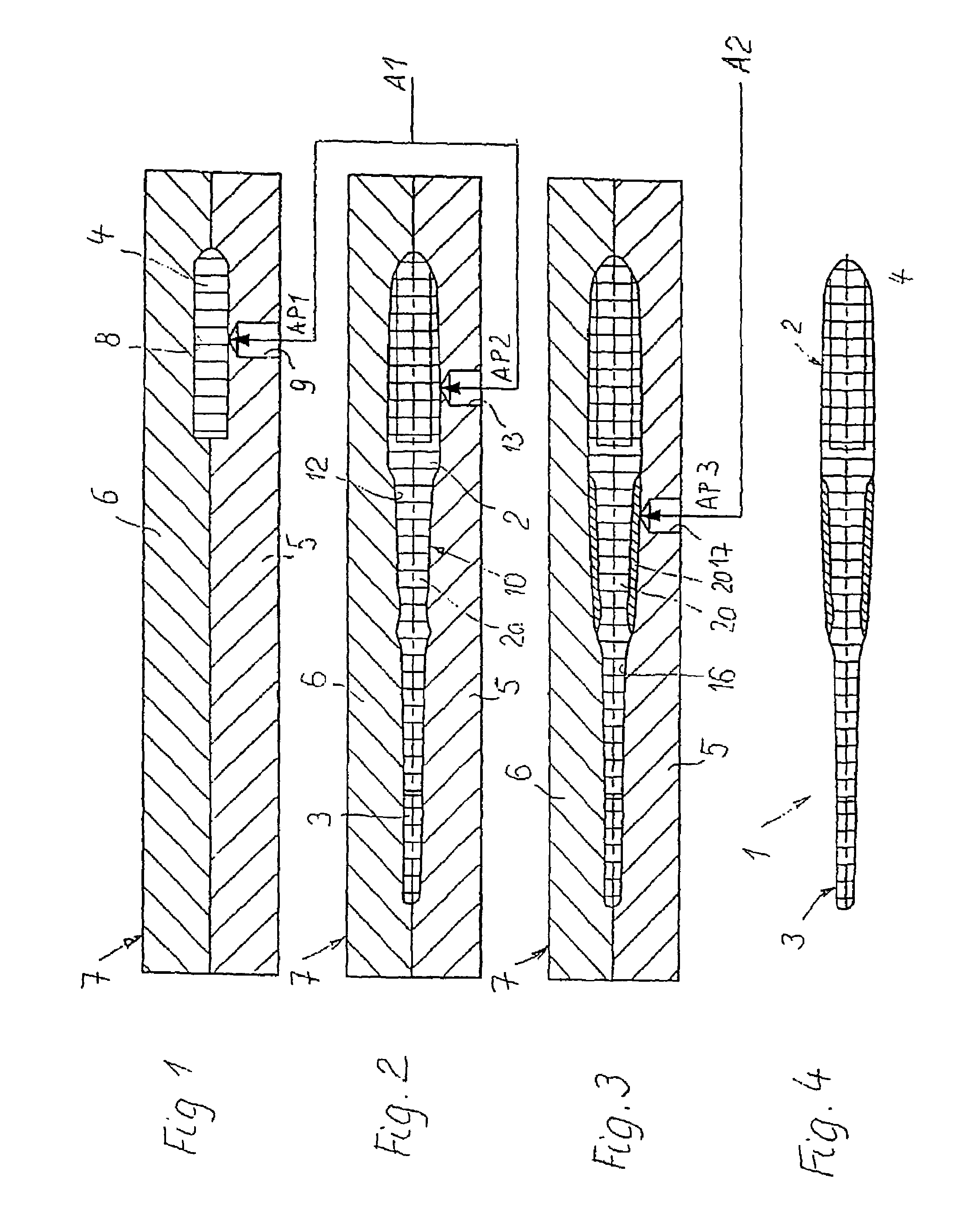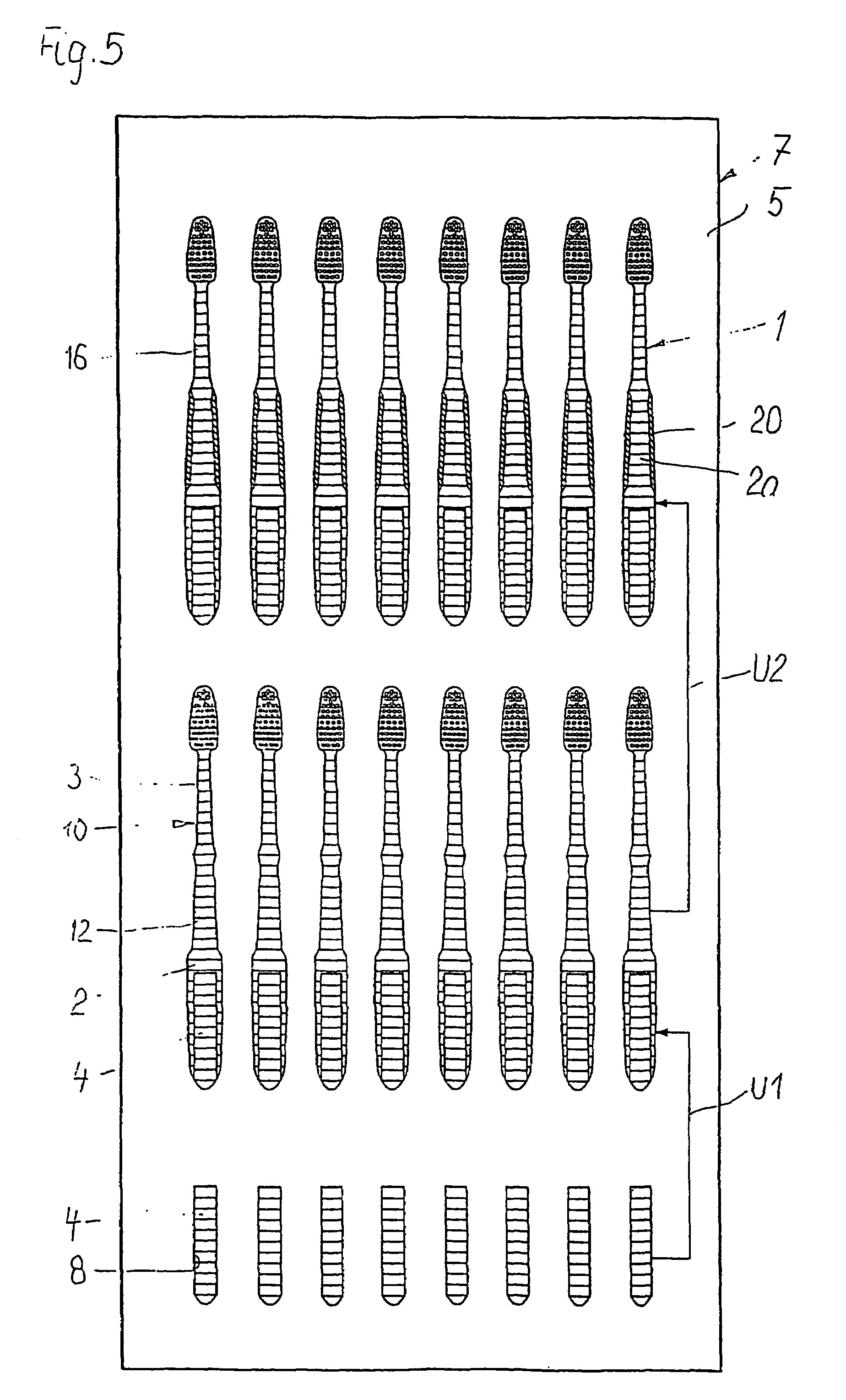Method for producing a toothbrush
a toothbrush and production method technology, applied in the field of toothbrush production, can solve the problems of large increase in injection time and cooling time, tendency to cavitation of handle parts with relatively large cross sections, and prolongation of injection molding process, so as to facilitate the formation of handles with distinct different portions. , the effect of large cross section
- Summary
- Abstract
- Description
- Claims
- Application Information
AI Technical Summary
Benefits of technology
Problems solved by technology
Method used
Image
Examples
Embodiment Construction
[0019]To produce a toothbrush 1 which is shown in FIG. 4 and whose handle 2 has a larger cross section than the front head part 3 provided for securing the bristles or tufts, an inner part 4 of the handle 2 is first prepared in a first step shown in FIG. 1. For this purpose, a first portion of the first material component provided for the handle 2 (and if appropriate also for the head part 3) is injected into a first cavity a formed between two parts 5, 6 of an injection mold 7. The first injection point for the first material component delivered from a first unit A1 is indicated by AP1 in FIG. 1, while the injection channel or injection nozzle provided for this is indicated by 9.
[0020]As can be seen from FIG. 5, the injection mold 7 is provided for the production of a plurality of toothbrushes 1, if appropriate eight tooth brushes 1. After partial cooling and hardening (as soon as sufficient inherent stability is achieved), the inner parts 4 injected in the first step according to ...
PUM
| Property | Measurement | Unit |
|---|---|---|
| area | aaaaa | aaaaa |
| elastically resilient | aaaaa | aaaaa |
| size | aaaaa | aaaaa |
Abstract
Description
Claims
Application Information
 Login to View More
Login to View More - R&D
- Intellectual Property
- Life Sciences
- Materials
- Tech Scout
- Unparalleled Data Quality
- Higher Quality Content
- 60% Fewer Hallucinations
Browse by: Latest US Patents, China's latest patents, Technical Efficacy Thesaurus, Application Domain, Technology Topic, Popular Technical Reports.
© 2025 PatSnap. All rights reserved.Legal|Privacy policy|Modern Slavery Act Transparency Statement|Sitemap|About US| Contact US: help@patsnap.com



